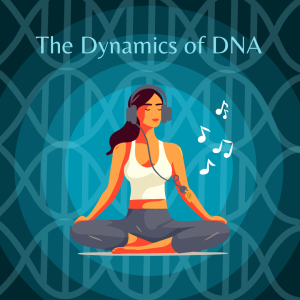The Dynamics of DNA: How Scientists are Translating Genes into Symphonies
By Danielle Rodriguez, C2ST Intern, Waubonsee Community College
The beat of your heart, the grumbling of your stomach, the whisper of air traveling in and out of your nose – these are all processes of the human body that we can feel and hear. But what about the processes in our body that go unheard? What about the traits that transpire before we even take our first breath; the ones that determine if our hair is curly or straight, our eyes brown or blue? These traits are determined by our DNA sequences, and scientists are creating ways to find patterns in these sequences by translating them into music.

Mark Temple, a molecular biologist and musician, was researching drugs used for cancer treatments when he became overwhelmed with reading the DNA sequences. He wanted to hear the DNA, so he developed a system of assigning four musical notes to the four nucleotides that DNA is composed of. He then took the pair of nucleotides and matched them to a slightly wider selection of notes, stacking them into musical chords. When these are played in sequence, these chords make music. This technique allowed Temple to find patterns in the DNA and helped him decide what DNA combinations to use. He believes the power to connect DNA to music will draw more people into science.
Temple is not the only one building the bridge between music and DNA. Biochemist Linda Long at the University of Exeter used a musical touchscreen to link instrumental sounds to proteins commonly found in the body. Long has translated plant proteins into an album titled “Music of the Plants,” and an album on human hormones called “Music of the Body.” She believes this technique will allow people to connect emotionally with science. Though it has not yet been tested, Long argues that there is a possibility that the translation of music from human hormones will tap into the subconscious mind and offer therapeutic effects.
This method is not the first of its kind. The concept of pairing DNA patterns with musical notes started as early as the 1970s by cancer researcher Susumu Ohno. Ohno found that gene expression and mutations followed a pattern, similar to patterns he found in musical compositions. Musical compositions and DNA coding sequences both heavily rely on the principle of repetition; coding sequences can be translated into music and music into coding sequences using this principle. Since Ohno first published his findings, scientists around the globe have been studying the relationship between DNA and music.
Conversations about genetic coding and DNA sequences are not easy ones to have. The ability to transform such a difficult concept as DNA into an auditory form may be what connects more people with science and expands the field of thought. DNA is not just billions of minuscule strands in our bodies. DNA is an eighth note, an arpeggio, a symphony in G. It is a musical score of the human being.
References: